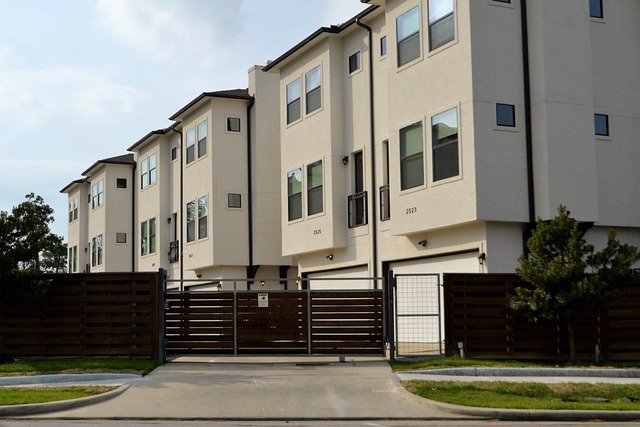Tree Trimming Services: Enhancing Your Landscape's Health and Beauty
Tree trimming is an essential aspect of maintaining a healthy and visually appealing landscape. Whether you're a homeowner or property manager, understanding the intricacies of tree trimming services can help you make informed decisions about caring for your outdoor spaces. This article will explore various aspects of tree trimming, from timing considerations to cost factors and the importance of regular maintenance.

When is the best time to trim trees for optimal health?
The ideal time for tree trimming depends on several factors, including the tree species and your specific goals. Generally, late winter or early spring is considered the best time for most trees. During this dormant period, trees are less susceptible to stress and disease, making it easier for them to heal from pruning cuts. Additionally, the lack of foliage allows arborists to better assess the tree’s structure and make more precise cuts.
However, there are exceptions to this rule. For instance, spring-flowering trees should be trimmed immediately after they finish blooming to avoid removing next year’s buds. Some fast-growing species may benefit from summer trimming to control their shape and size. It’s essential to consult with a professional arborist to determine the optimal timing for your specific trees.
What factors influence tree trimming service costs?
Understanding the costs associated with tree trimming services can help you budget appropriately and ensure you’re getting a fair price. Several factors can influence the cost of tree trimming:
-
Tree size and height: Larger trees typically require more time, equipment, and labor, resulting in higher costs.
-
Tree location and accessibility: Trees near buildings or power lines may require specialized equipment or techniques, increasing the price.
-
Tree health and condition: Diseased or damaged trees may need extra care or pose additional risks, affecting the overall cost.
-
Type of trimming required: Light pruning will cost less than extensive reshaping or removal of large branches.
-
Time of year: Prices may vary depending on the season and demand for services.
-
Geographic location: Labor and equipment costs can differ based on your region.
| Service | Provider | Cost Estimation |
|---|---|---|
| Basic Trimming (Small Tree) | Local Tree Service | $75 - $300 |
| Extensive Trimming (Medium Tree) | Professional Arborist | $150 - $800 |
| Complex Trimming (Large Tree) | Specialized Tree Care Company | $300 - $1,500+ |
Prices, rates, or cost estimates mentioned in this article are based on the latest available information but may change over time. Independent research is advised before making financial decisions.
How can you find reliable tree trimming services in your area?
Locating reputable tree trimming services requires some research and due diligence. Here are some steps to help you find reliable professionals:
-
Ask for recommendations from friends, family, or neighbors who have recently had tree work done.
-
Check online review platforms and local business directories for highly-rated tree services.
-
Verify credentials, including proper licensing, insurance, and certifications from organizations like the International Society of Arboriculture (ISA).
-
Request multiple quotes and compare services offered, ensuring each company conducts an on-site assessment.
-
Inquire about their equipment, safety practices, and cleanup procedures.
-
Ask for references and, if possible, view examples of their previous work.
Remember that the cheapest option isn’t always the best. Focus on finding a service that offers a balance of fair pricing, expertise, and quality work.
Why is regular tree trimming crucial for landscape maintenance?
Regular tree trimming is vital for maintaining a healthy and attractive landscape. Here are some key reasons why consistent trimming should be part of your property maintenance routine:
-
Promotes tree health: Removing dead, diseased, or damaged branches prevents the spread of decay and reduces the risk of pest infestations.
-
Improves safety: Trimming eliminates weak or hazardous branches that could fall and cause injury or property damage.
-
Enhances aesthetics: Proper pruning shapes trees, improving their overall appearance and complementing your landscape design.
-
Increases sunlight penetration: Thinning dense canopies allows more light to reach your lawn and other plants beneath the trees.
-
Encourages fruit production: For fruit-bearing trees, strategic pruning can stimulate better fruit yield and quality.
-
Prevents property damage: Regular trimming keeps branches away from structures, power lines, and other potential hazards.
By investing in regular tree trimming, you not only protect your property but also contribute to the long-term health and beauty of your landscape.
In conclusion, tree trimming services play a crucial role in maintaining the health, safety, and aesthetics of your outdoor spaces. By understanding the best timing for trimming, factors affecting costs, how to find reliable services, and the importance of regular maintenance, you can make informed decisions about caring for your trees. Remember to consult with certified arborists for personalized advice and always prioritize the long-term well-being of your trees and landscape.




